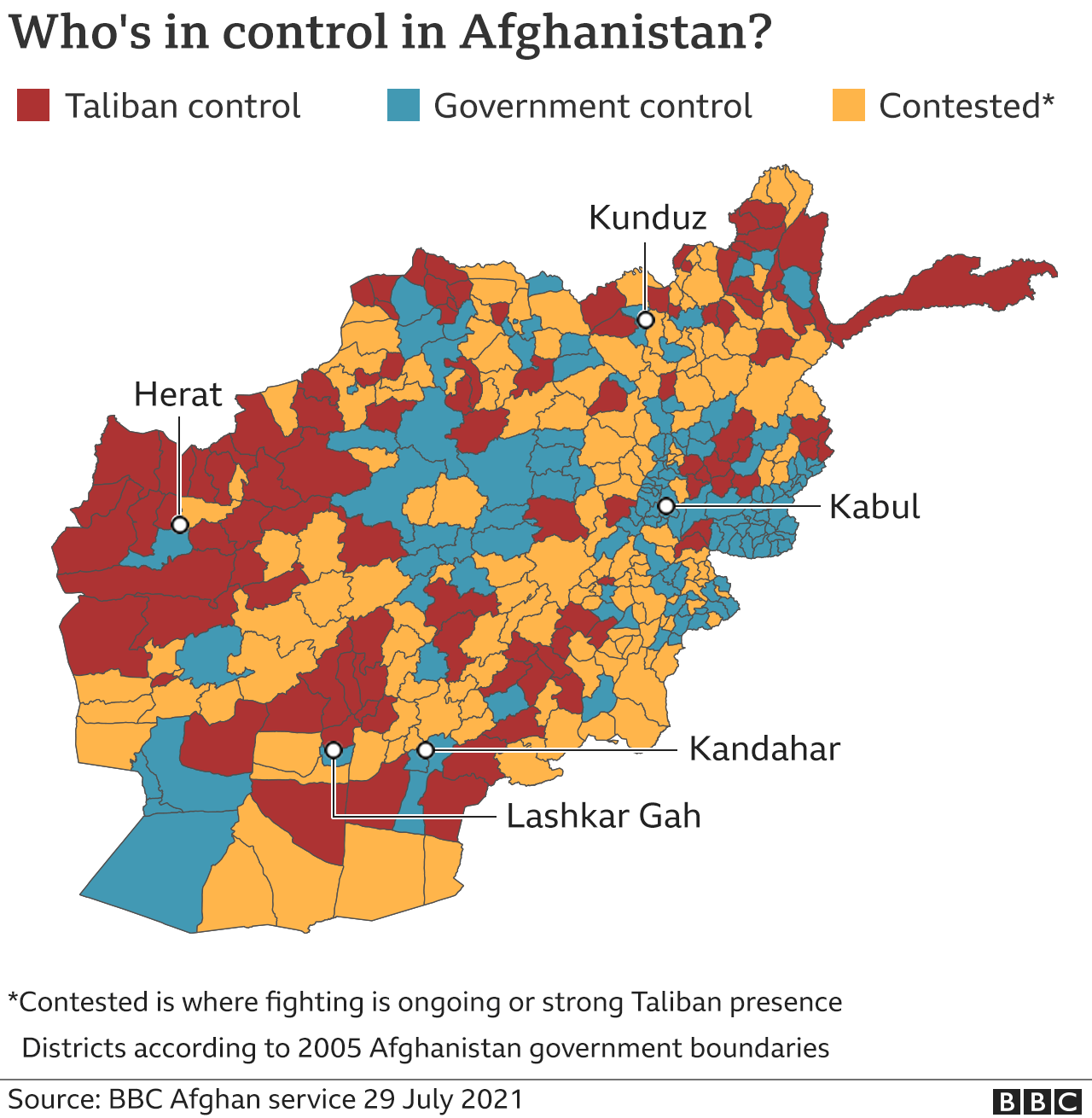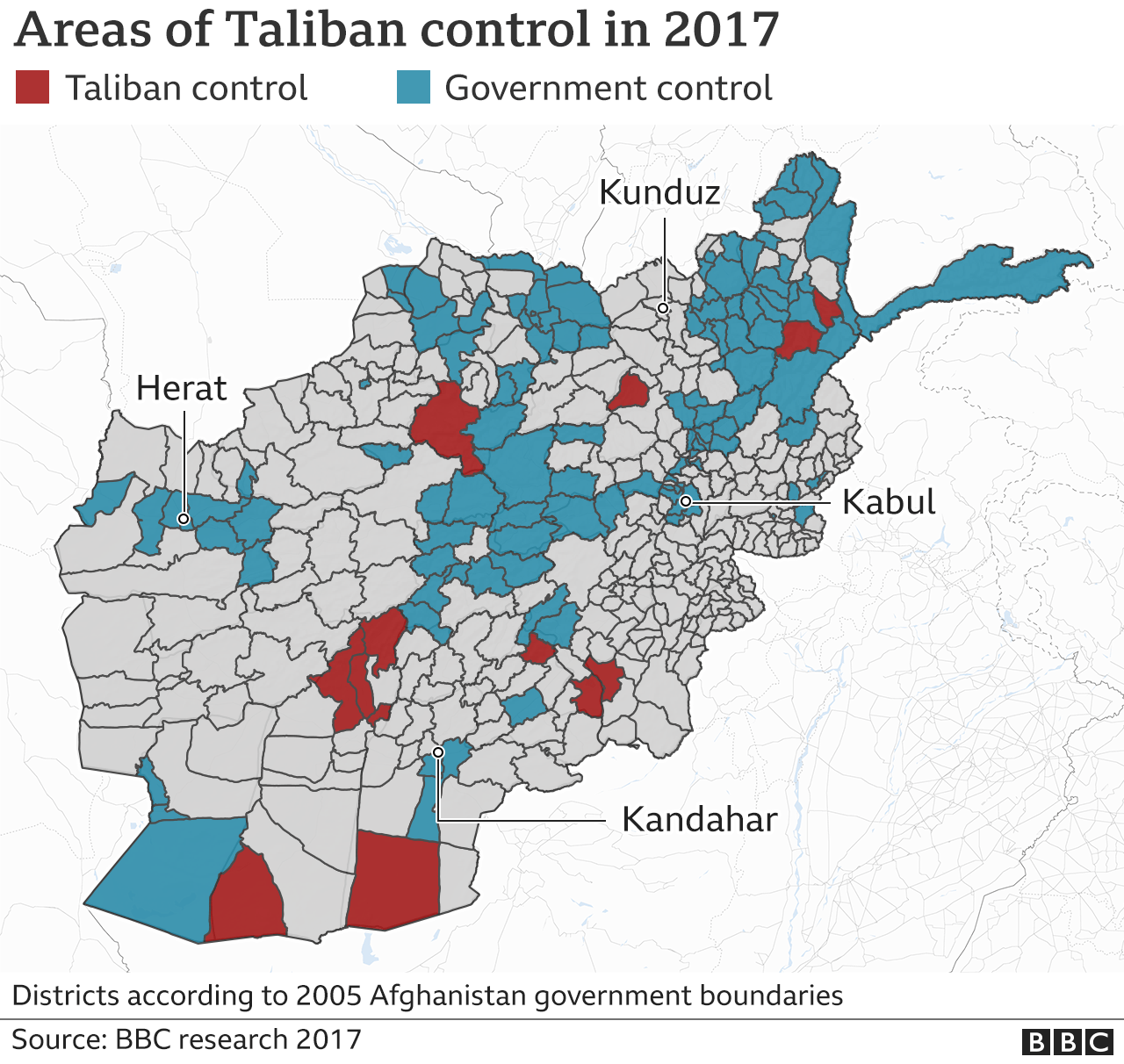jet_li
Politcal Worker (100+ posts)
The Emergence of Afghan Taliban has created fears in the region. Therefore there are serious efforts made to bring peace in the region.
Due this development many players in region are now active to enagage Taliban in a meaningful way to have a peace in the region.
According to BBC:
The resurgent Taliban have taken more territory in Afghanistan in the last two months than at any time since they were ousted from power in 2001.
Over the last 20 years, the control map of Afghanistan has been an ever-changing canvas. Here, we look at the fluctuating picture of who controls which areas.
It appears the Taliban have been emboldened in recent weeks by the withdrawal of US troops - retaking many districts from government forces.
Research from the BBC Afghan service shows the militants now have a strong presence across the country, including in the north and north-east and central provinces like Ghazni and Maidan Wardak. They are also closing in on major cities such as Kunduz, Herat, Kandahar and Lashkar Gah.


By control, we mean districts where the administrative centre, police headquarters and all other government institutions are controlled by the Taliban.
US troops and their Nato and regional allies forced the Taliban from power in November 2001. The group had been harbouring Osama Bin Laden and other al-Qaeda figures linked to the 11 September 2001 attacks in the US.
But despite a continued international presence in the region, billions of dollars of support and training for the Afghan government forces, the Taliban regrouped and gradually regained strength in more remote areas.
Their main areas of influence were around their traditional strongholds in the south and south-west - northern Helmand, Kandahar, Uruzgan, and Zabul provinces. But also, in the hills of southern Faryab in the north-west and the mountains of Badakhshan in the north east.
A BBC study in 2017 showed the Taliban were in full control of a number of districts. But the research also showed they were active in many other parts of the country, mounting weekly or monthly attacks in some areas, suggesting significantly higher strength than previous estimates.


About 15 million people - half the population - were reported to be living in areas either controlled by the Taliban or where the Taliban were openly present and regularly mounted attacks against government forces.
For the details about Great Game Please Watch this:
Sources:

 www.bbc.com
www.bbc.com

 tribune.com.pk
tribune.com.pk
Due this development many players in region are now active to enagage Taliban in a meaningful way to have a peace in the region.
According to BBC:
The resurgent Taliban have taken more territory in Afghanistan in the last two months than at any time since they were ousted from power in 2001.
Over the last 20 years, the control map of Afghanistan has been an ever-changing canvas. Here, we look at the fluctuating picture of who controls which areas.
It appears the Taliban have been emboldened in recent weeks by the withdrawal of US troops - retaking many districts from government forces.
Research from the BBC Afghan service shows the militants now have a strong presence across the country, including in the north and north-east and central provinces like Ghazni and Maidan Wardak. They are also closing in on major cities such as Kunduz, Herat, Kandahar and Lashkar Gah.


By control, we mean districts where the administrative centre, police headquarters and all other government institutions are controlled by the Taliban.
US troops and their Nato and regional allies forced the Taliban from power in November 2001. The group had been harbouring Osama Bin Laden and other al-Qaeda figures linked to the 11 September 2001 attacks in the US.
But despite a continued international presence in the region, billions of dollars of support and training for the Afghan government forces, the Taliban regrouped and gradually regained strength in more remote areas.
Their main areas of influence were around their traditional strongholds in the south and south-west - northern Helmand, Kandahar, Uruzgan, and Zabul provinces. But also, in the hills of southern Faryab in the north-west and the mountains of Badakhshan in the north east.
A BBC study in 2017 showed the Taliban were in full control of a number of districts. But the research also showed they were active in many other parts of the country, mounting weekly or monthly attacks in some areas, suggesting significantly higher strength than previous estimates.


About 15 million people - half the population - were reported to be living in areas either controlled by the Taliban or where the Taliban were openly present and regularly mounted attacks against government forces.
For the details about Great Game Please Watch this:
According to Dr. Ehsan
The writer is Dean of Social Sciences at Garrison University Lahore

The writer is Dean of Social Sciences at Garrison University Lahore

Both Russia and China will not compromise on their national interests and both are most likely to continue to make effective use of diplomacy, information, military and economics as instruments that will lead their grand strategy in the Indo-Pacific region.
The Great Game is back and the Indian Ocean may continue to remain the geographical space where it will be contested, the ocean may continue to remain a commercial waterbody but more and more military machines and military platforms will be deployed in this geographical space by the powers not only to guard their individual spheres of influence but also to guard the commerce and trade for which this New Great Game will be played.
Sources:

Mapping the advance of the Taliban in Afghanistan
Maps of Afghanistan show who controls districts in fighting between the government and Taliban forces.

The New Great Game | The Express Tribune
Great Game was to seek influence and control in Afghanistan as well as the neighboring territories
Last edited:





























